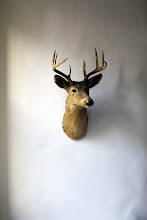In late November 2006, I noticed an arbitrage opportunity while comparing shoe prices on Flight Club (a rare shoe consignment store with locations in LA and NYC) with prices on Ebay. I realized that a substantial discrepancy existed and shoes could be bought on Ebay and then sold on Flight Club with relatively low risk and a quick turn around. From December 2006 to December 2007, I generated over sixty five thousand dollars in revenue buying and selling shoes.
I believe this discount existed for a verity of reasons, the largest two being the delay and hassle of buying shoes on Ebay and fear of purchasing fake merchandise. Many buyers would pay a premium to know the shoes were authentic and receive them promptly.
Although Ebay and Paypal guarantee against fake goods and penalize these sellers, many fakes still exist on Ebay. To the untrained eye, a fake and a real shoe are indistinguishable. Which one of these shoes is fake; A or B? Overtime, the subtle differences become easier to catch. (If you want to read more about distinguishing between real and fake shoes, check out Solepedia's fake guide.) These discounts were fundemental to the relationship between Ebay and Flight Club and thus could be scalably exploited without the gape narrowing.
An average arbitrage shoe trade is as follows: Sb Dunk Milli Vanilli's are listed on Flight Club for $140 ( $112 net after fees). I am willing to pay $84 shipped for this shoe (assuming a 33% gross profit margin). After finding a shoe and verifying its authenticity, like this one here, I would subtract the cost of shipping from my desired price, $84-$17= $67 and then bid accordingly. To increase my chances of winning each auction, I would tack on random cents to each, assuming that most bidders with bid up in dollar increments thus if they bid $67.00, my bid of $67.07 would win. My chances of winning auctions were relatively low so I would bid on dozens of shoes at one time expecting to win a fraction of them. After winning an auction I would have the shoes shipped to my dorm room and then on to Flight Club New York or Los Angeles depending on their inventories. These shoes would then sit on in the store until they were sold at which point they would send me a check for 80% of the sale price. I would deposit these checks and immediatly start buying more shoes. By reinvesting profits I was able to grow my working capital very quickly.
As with any trendy brand, expensive and intangible products such as the Tiffany Dunk draw people to the brand but most people end up buying a cheaper, more conservative product like
Bic Dunk. With this in mind, I focused on general release SB Dunks like the Band Aid, Purple Pigeon, Money Cat, and SB Blazers like the Mission. Although the margins are slightly lower on these shoes, the turn around is much faster.
Starting in November of 2007, I began to see the gap between Ebay and Flight Club prices increase and a jump in the time spent in Flight Club inventories. The increase in the spread between Flight Club and Ebay scared me because the prices in the more liquid market were dropping while the less liquid market were staying constant meaning that sales were slowing down. The sneaker game is dependent on fast changing trends and young people with disposable income. I decided to take profits and stopped buying shoes all together in the middle of December. I learned a lot about leverage, working as a middleman and highend retail and felt it was time to move on.
2 days ago






2 comments:
great article buddy. keep it up
foss girl, this was a good read
Post a Comment